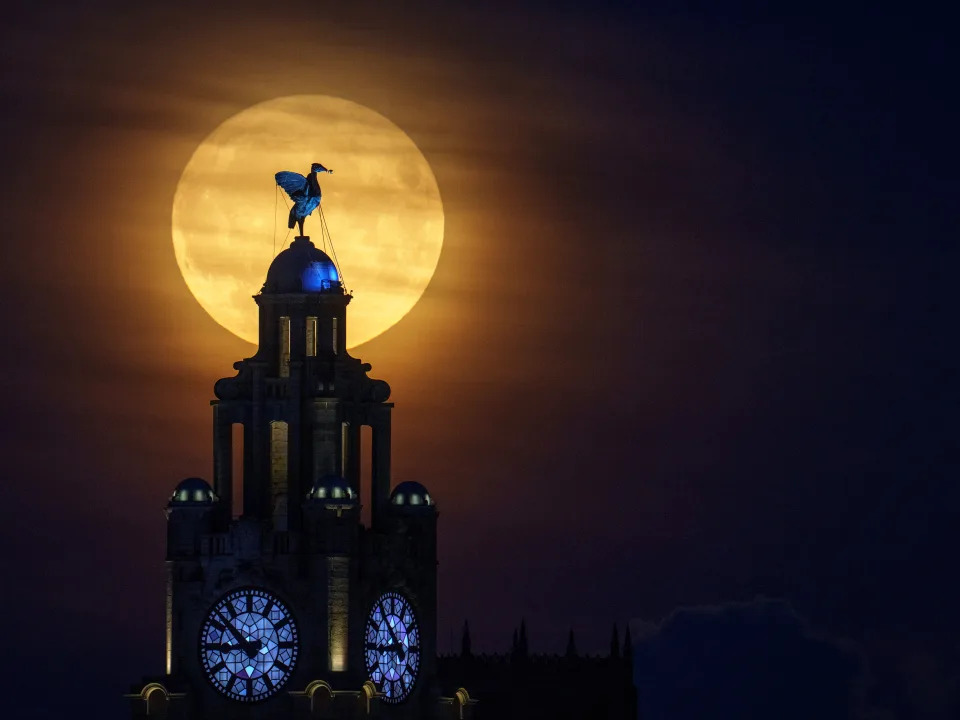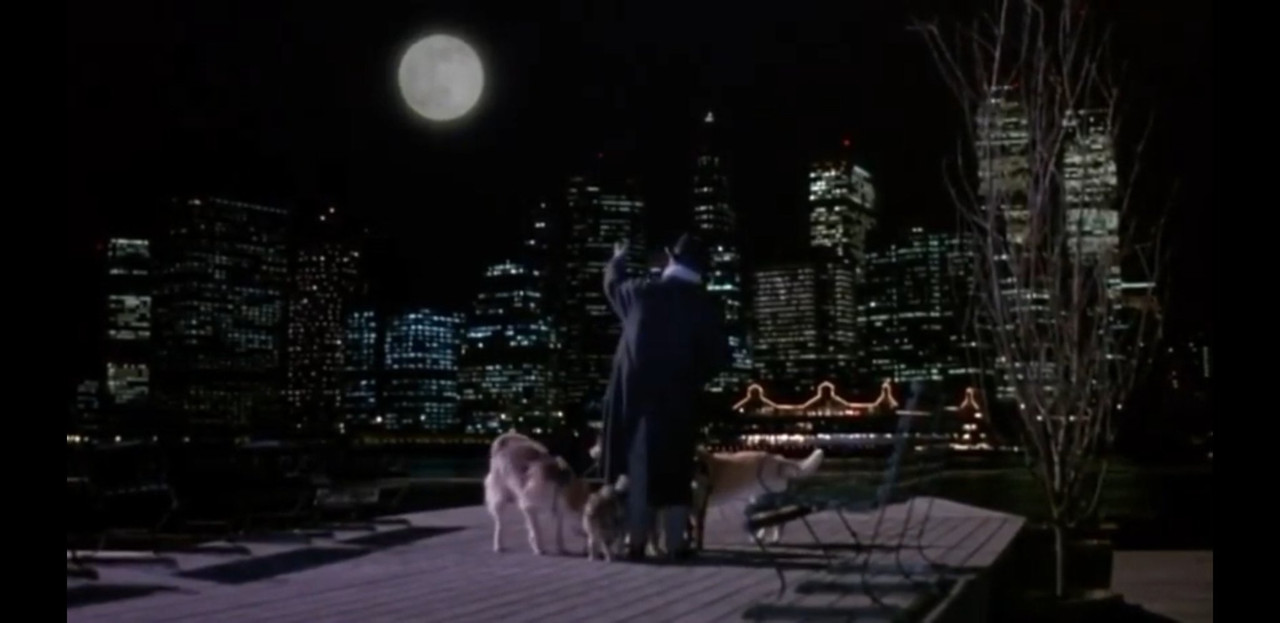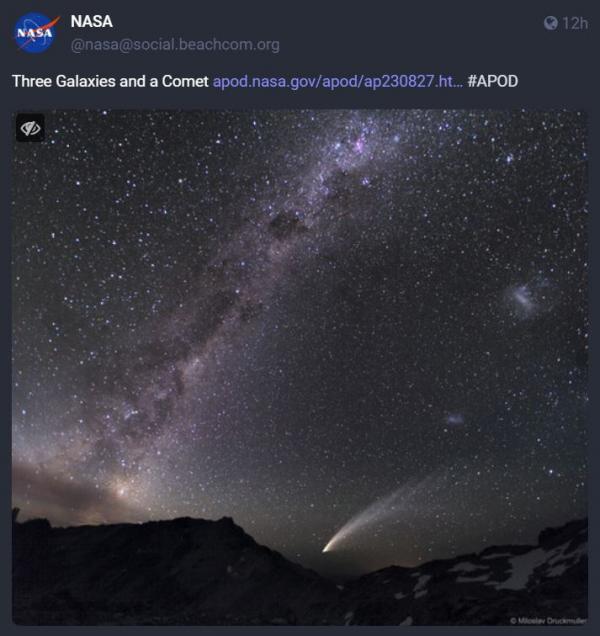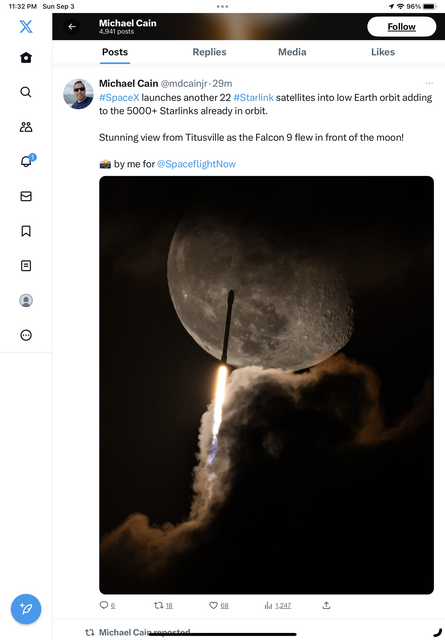-
SCAM WARNING! See how this scam works in Classifieds.
You are using an out of date browser. It may not display this or other websites correctly.
You should upgrade or use an alternative browser.
You should upgrade or use an alternative browser.
I just saw the moon
- Thread starter TheMadDabber
- Start date
Bologna
(zombie) Woof.
Get out there and check it out, there won't be another in over 30 years!:
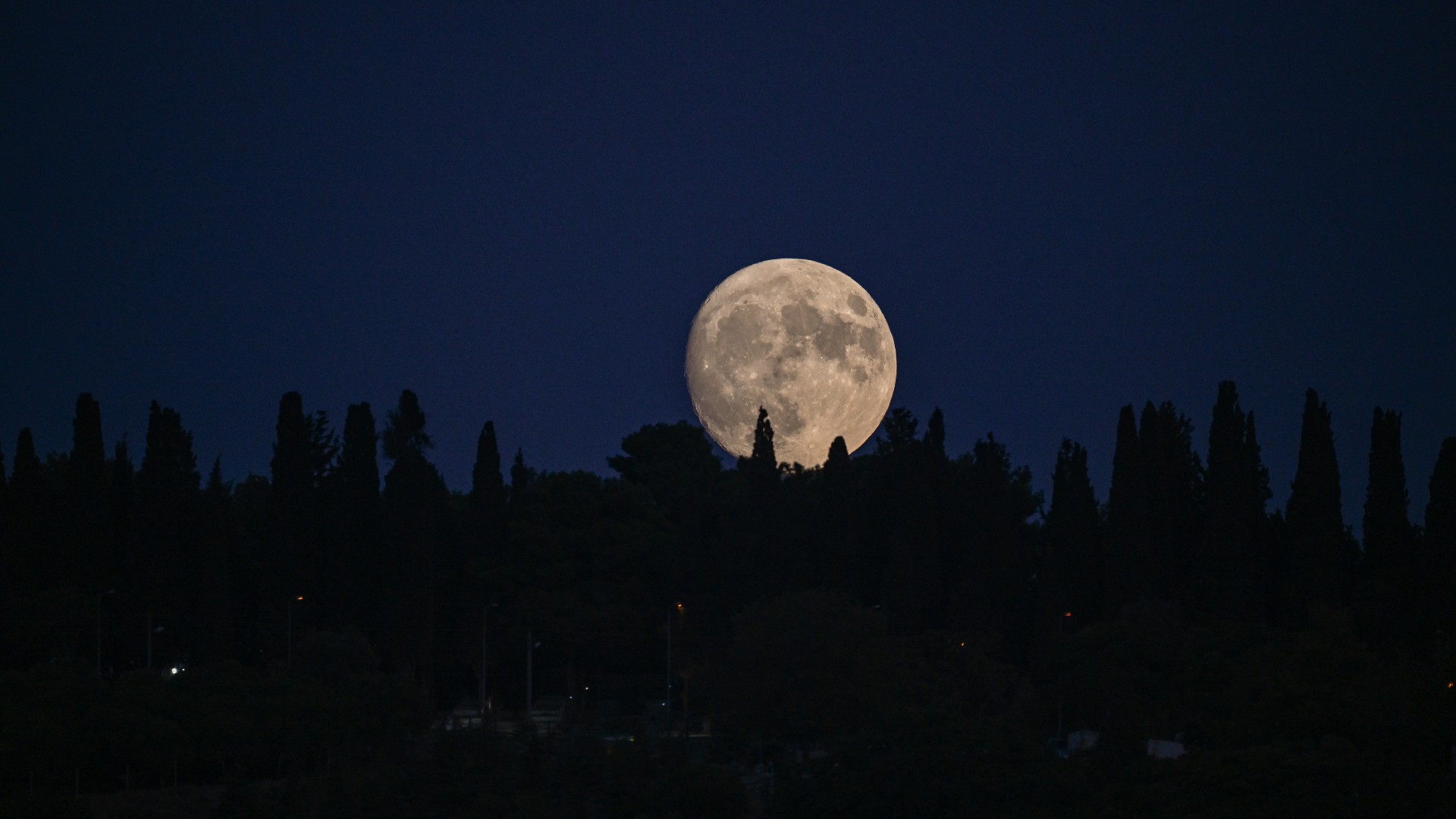
 www.space.com
www.space.com

The last Super Blue Moon until 2037 rises tonight. Here's how to see it
August gets not only a second full moon, but a rare Super Blue Moon.
Last edited:
florduh
Well-Known Member
2037 you say? Ehhhhh...I think I'm gonna save it till then. I assume I'll be a few years into The Water Wars at that point, and it will be nice to have something to look forward to!Get out there and check it out, there won't be another in over 30 years!:

The last Super Blue Moon until 2037 rises tonight. Here's how to see it
August gets not only a second full moon, but a rare Super Blue Moon.www.space.com

NYC_Frank
"A man with no vices is a man with no virtues"
CrazyDiamond
HAL is a StarChild
Super cool to see Crew 6 Dragon Endeavor streaking across the sky a few minutes ago...good splash down, welcome home.
Bologna
(zombie) Woof.
Ha, guess I was pretty stoned... so stoned that apparently my math skillz were a tad suspect to say the least... I meant to say "in over 10 year!" (14 really... I can doos maths!Get out there and check it out, there won't be another in over 30 years!:

The last Super Blue Moon until 2037 rises tonight. Here's how to see it
August gets not only a second full moon, but a rare Super Blue Moon.www.space.com
CrazyDiamond
HAL is a StarChild
In a photo from the early hours of July 29 (UTC), a Redstone rocket and Mercury capsule are on display at Cape Canaveral Launch Complex 5. Beyond the Redstone, the 8 minute long exposure has captured the arcing launch streak of a SpaceX Falcon Heavy rocket. The Falcon's heavy communications satellite payload, at a record setting 9 metric tons, is bound for geosynchronous orbit some 22,000 miles above planet Earth. The historic launch of a Redstone rocket carried astronaut Alan Shepard on a suborbital spaceflight in May 1961 to an altitude of about 116 miles. Near the top of the frame, this Falcon rocket's two reusable side boosters separate and execute brief entry burns. They returned to land side by side at Canaveral's Landing Zone 1 and 2 in the distance.

Not the James Webb Space Telescope's latest view of a distant galactic nebula, this illuminated cloud of gas and dust dazzled early morning spacecoast skygazers on August 26. The snapshot was taken about 2 minutes after the launch of a Falcon 9 rocket on the SpaceX Crew-7 mission, the seventh commercial crew rotation mission for the International Space Station. It captures drifting plumes and exhaust from the separated first and second stage illuminated against the still dark skies. Near the center of the image, within the ragged blueish ring, are two bright points of light. The lower one is the second stage of the rocket carrying 4 humans to space in a Crew Dragon spacecraft. The bright point above is the Falcon 9 first stage booster orienting itself for the trip back to Landing Zone-1 at Cape Canaveral, planet Earth.

Gaze across the frozen canyons of northern Pluto in this contrast enhanced color scene. The image data used to construct it was acquired in July 2015 by the New Horizons spacecraft as it made the first reconnaissance flight through the remote Pluto system six billion kilometers from the Sun. Now known as Lowell Regio, the region was named for Percival Lowell, founder of the Lowell Observatory. Also famous for his speculation that there were canals on Mars, Lowell started the search that ultimately led to Pluto's discovery in 1930 by Clyde Tombaugh. In this frame Pluto's North Pole is above and left of center. The pale bluish floor of the broad canyon on the left is about 70 kilometers (45 miles) wide, running vertically toward the south. Higher elevations take on a yellowish hue. New Horizon's measurements were used to determine that in addition to nitrogen ice, methane ice is abundant across Lowell Regio. So far, Pluto is the only Solar System world named by an 11-year-old girl.
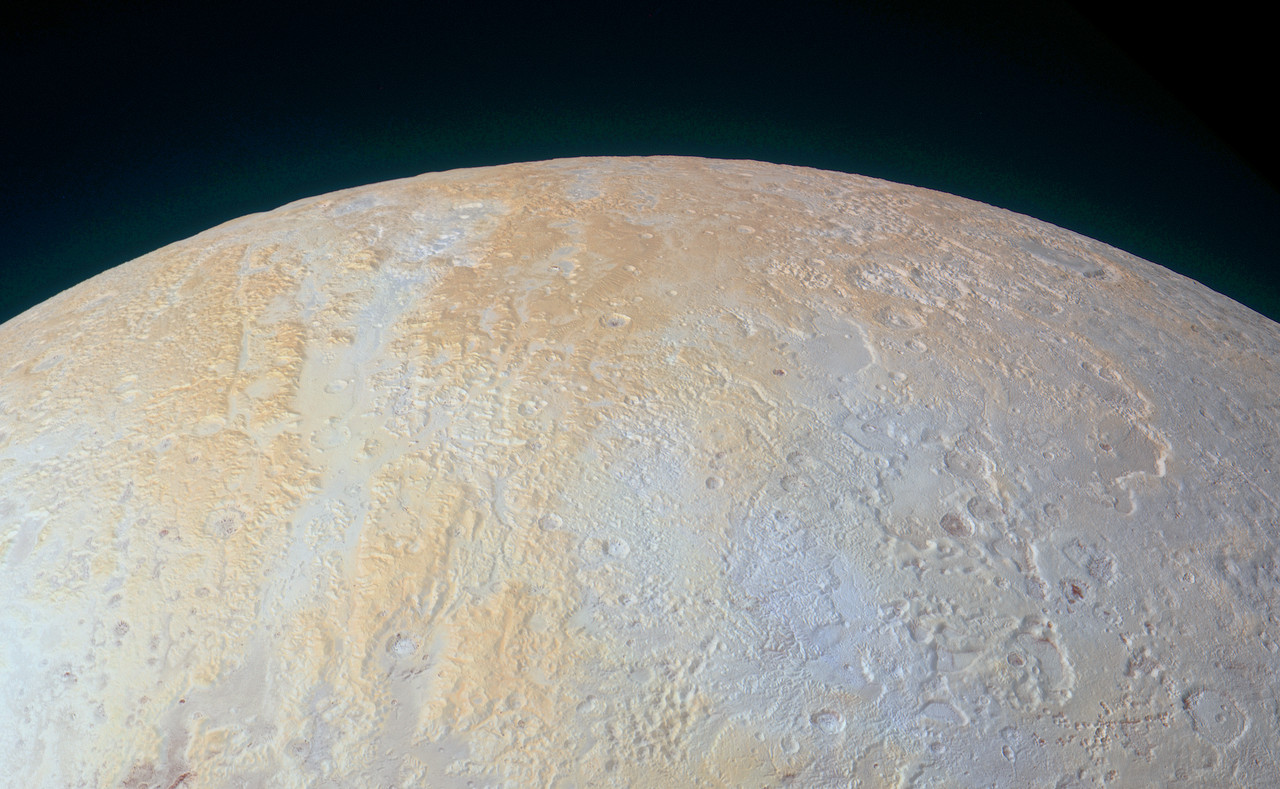
Why is the Cigar Galaxy billowing red smoke? M82, as this starburst galaxy is also known, was stirred up by a recent pass near large spiral galaxy M81. This doesn't fully explain the source of the red-glowing outwardly expanding gas and dust, however. Evidence indicates that this gas and dust is being driven out by the combined emerging particle winds of many stars, together creating a galactic superwind. The dust particles are thought to originate in M82's interstellar medium and are actually similar in size to particles in cigar smoke. The featured photographic mosaic highlights a specific color of red light strongly emitted by ionized hydrogen gas, showing detailed filaments of this gas and dust. The filaments extend for over 10,000 light years. The 12-million light-year distant Cigar Galaxy is the brightest galaxy in the sky in infrared light and can be seen in visible light with a small telescope towards the constellation of the Great Bear (Ursa Major).
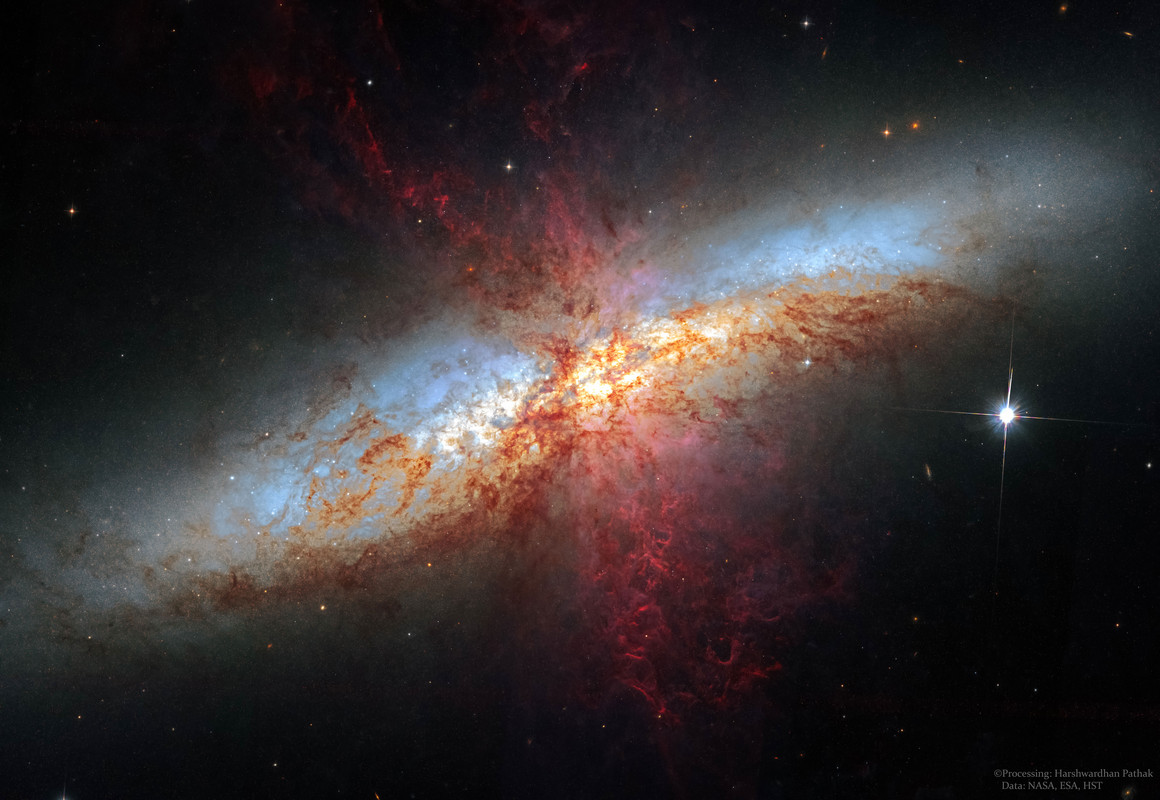
An intriguing pair of interacting galaxies, M51 is the 51st entry in Charles Messier's famous catalog. Perhaps the original spiral nebula, the large galaxy with whirlpool-like spiral structure seen nearly face-on is also cataloged as NGC 5194. Its spiral arms and dust lanes sweep in front of a companion galaxy (right), NGC 5195. Some 31 million light-years distant, within the boundaries of the well-trained constellation Canes Venatici, M51 looks faint and fuzzy to the eye in direct telescopic views. But this remarkably deep image shows off stunning details of the galaxy pair's striking colors and extensive tidal debris. A collaboration of astro-imagers using telescopes on planet Earth combined over 10 days of exposure time to create this definitive galaxy portrait of M51. The image includes 118 hours of narrowband data that also reveals a vast glowing cloud of reddish ionized hydrogen gas discovered in the M51 system.
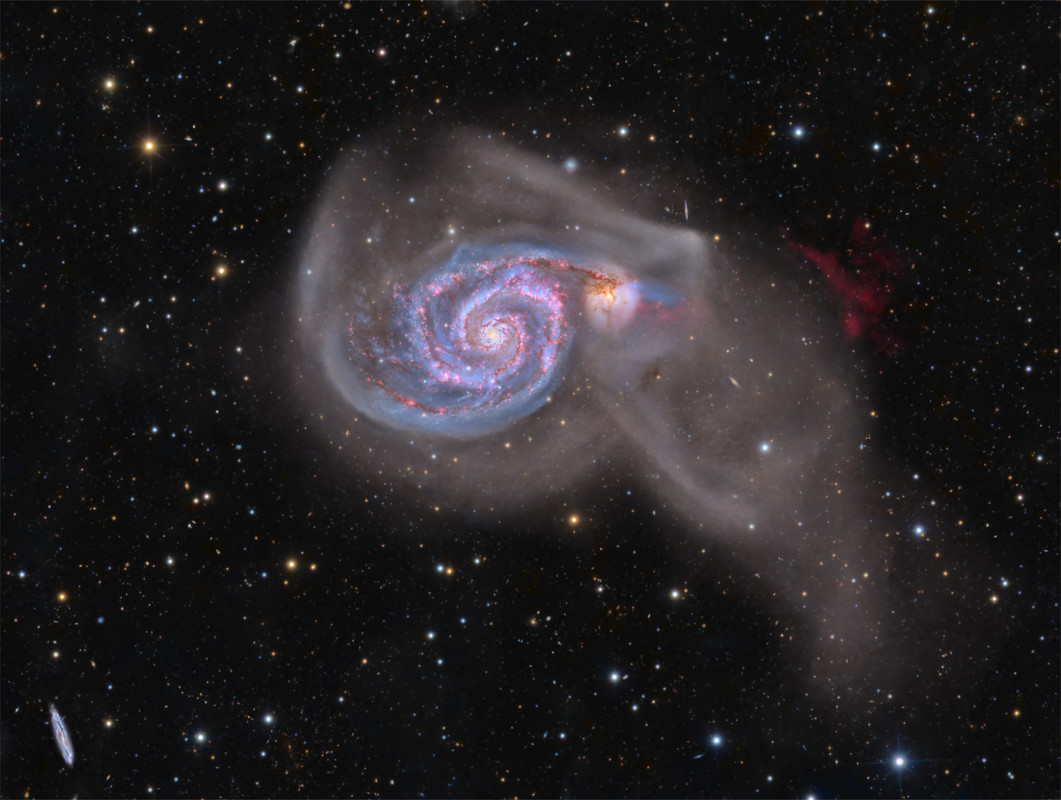
As stars die, they create clouds. Two stellar death clouds of gas and dust can be found toward the high-flying constellation of the Swan (Cygnus) as they drift through rich star fields in the plane of our Milky Way Galaxy. Caught here within the telescopic field of view are the Soap Bubble (lower left) and the Crescent Nebula (upper right). Both were formed at the final phase in the life of a star. Also known as NGC 6888, the Crescent Nebula was shaped as its bright, central massive Wolf-Rayet star, WR 136, shed its outer envelope in a strong stellar wind. Burning through fuel at a prodigious rate, WR 136 is near the end of a short life that should finish in a spectacular supernova explosion. Discovered in 2013, the Soap Bubble Nebula is likely a planetary nebula, the final shroud of a lower mass, long-lived, Sun-like star destined to become a slowly cooling white dwarf. Both stellar nebulas are about 5,000 light-years distant, with the larger Crescent Nebula spanning about 25 light-years across. Within a few million years, both will likely have dispersed.

Sprawling emission nebulae IC 1396 and Sh2-129 mix glowing interstellar gas and dark dust clouds in this nearly 12 degree wide field of view toward the northern constellation Cepheus the King. Energized by its central star IC 1396 (left), is hundreds of light-years across and some 3,000 light-years distant. The nebula's intriguing dark shapes include a winding dark cloud popularly known as the Elephant's Trunk below and right of center. Tens of light-years long, it holds the raw material for star formation and is known to hide protostars within. Located a similar distance from planet Earth, the bright knots and swept back ridges of emission of Sh2-129 on the right suggest its popular name, the Flying Bat Nebula. Within the Flying Bat, the most recently recognized addition to this royal cosmic zoo is the faint bluish emission from Ou4, the Giant Squid Nebula. Near the lower right edge of the frame, the suggestive dark marking on the sky cataloged as Barnard 150 is also known as the dark Seahorse Nebula.

And the best for last...The Ring Nebula (M57), is more complicated than it appears through a small telescope. The easily visible central ring is about one light-year across, but this remarkable exposure by the James Webb Space Telescope explores this popular nebula with a deep exposure in infrared light. Strings of gas, like eyelashes around a cosmic eye, become evident around the Ring in this digitally enhanced featured image in assigned colors. These long filaments may be caused by shadowing of knots of dense gas in the ring from energetic light emitted within. The Ring Nebula is an elongated planetary nebula, a type of gas cloud created when a Sun-like star evolves to throw off its outer atmosphere to become a white dwarf star. The central oval in the Ring Nebula lies about 2,500 light-years away toward the musical constellation Lyra.


Not the James Webb Space Telescope's latest view of a distant galactic nebula, this illuminated cloud of gas and dust dazzled early morning spacecoast skygazers on August 26. The snapshot was taken about 2 minutes after the launch of a Falcon 9 rocket on the SpaceX Crew-7 mission, the seventh commercial crew rotation mission for the International Space Station. It captures drifting plumes and exhaust from the separated first and second stage illuminated against the still dark skies. Near the center of the image, within the ragged blueish ring, are two bright points of light. The lower one is the second stage of the rocket carrying 4 humans to space in a Crew Dragon spacecraft. The bright point above is the Falcon 9 first stage booster orienting itself for the trip back to Landing Zone-1 at Cape Canaveral, planet Earth.

Gaze across the frozen canyons of northern Pluto in this contrast enhanced color scene. The image data used to construct it was acquired in July 2015 by the New Horizons spacecraft as it made the first reconnaissance flight through the remote Pluto system six billion kilometers from the Sun. Now known as Lowell Regio, the region was named for Percival Lowell, founder of the Lowell Observatory. Also famous for his speculation that there were canals on Mars, Lowell started the search that ultimately led to Pluto's discovery in 1930 by Clyde Tombaugh. In this frame Pluto's North Pole is above and left of center. The pale bluish floor of the broad canyon on the left is about 70 kilometers (45 miles) wide, running vertically toward the south. Higher elevations take on a yellowish hue. New Horizon's measurements were used to determine that in addition to nitrogen ice, methane ice is abundant across Lowell Regio. So far, Pluto is the only Solar System world named by an 11-year-old girl.

Why is the Cigar Galaxy billowing red smoke? M82, as this starburst galaxy is also known, was stirred up by a recent pass near large spiral galaxy M81. This doesn't fully explain the source of the red-glowing outwardly expanding gas and dust, however. Evidence indicates that this gas and dust is being driven out by the combined emerging particle winds of many stars, together creating a galactic superwind. The dust particles are thought to originate in M82's interstellar medium and are actually similar in size to particles in cigar smoke. The featured photographic mosaic highlights a specific color of red light strongly emitted by ionized hydrogen gas, showing detailed filaments of this gas and dust. The filaments extend for over 10,000 light years. The 12-million light-year distant Cigar Galaxy is the brightest galaxy in the sky in infrared light and can be seen in visible light with a small telescope towards the constellation of the Great Bear (Ursa Major).

An intriguing pair of interacting galaxies, M51 is the 51st entry in Charles Messier's famous catalog. Perhaps the original spiral nebula, the large galaxy with whirlpool-like spiral structure seen nearly face-on is also cataloged as NGC 5194. Its spiral arms and dust lanes sweep in front of a companion galaxy (right), NGC 5195. Some 31 million light-years distant, within the boundaries of the well-trained constellation Canes Venatici, M51 looks faint and fuzzy to the eye in direct telescopic views. But this remarkably deep image shows off stunning details of the galaxy pair's striking colors and extensive tidal debris. A collaboration of astro-imagers using telescopes on planet Earth combined over 10 days of exposure time to create this definitive galaxy portrait of M51. The image includes 118 hours of narrowband data that also reveals a vast glowing cloud of reddish ionized hydrogen gas discovered in the M51 system.

As stars die, they create clouds. Two stellar death clouds of gas and dust can be found toward the high-flying constellation of the Swan (Cygnus) as they drift through rich star fields in the plane of our Milky Way Galaxy. Caught here within the telescopic field of view are the Soap Bubble (lower left) and the Crescent Nebula (upper right). Both were formed at the final phase in the life of a star. Also known as NGC 6888, the Crescent Nebula was shaped as its bright, central massive Wolf-Rayet star, WR 136, shed its outer envelope in a strong stellar wind. Burning through fuel at a prodigious rate, WR 136 is near the end of a short life that should finish in a spectacular supernova explosion. Discovered in 2013, the Soap Bubble Nebula is likely a planetary nebula, the final shroud of a lower mass, long-lived, Sun-like star destined to become a slowly cooling white dwarf. Both stellar nebulas are about 5,000 light-years distant, with the larger Crescent Nebula spanning about 25 light-years across. Within a few million years, both will likely have dispersed.

Sprawling emission nebulae IC 1396 and Sh2-129 mix glowing interstellar gas and dark dust clouds in this nearly 12 degree wide field of view toward the northern constellation Cepheus the King. Energized by its central star IC 1396 (left), is hundreds of light-years across and some 3,000 light-years distant. The nebula's intriguing dark shapes include a winding dark cloud popularly known as the Elephant's Trunk below and right of center. Tens of light-years long, it holds the raw material for star formation and is known to hide protostars within. Located a similar distance from planet Earth, the bright knots and swept back ridges of emission of Sh2-129 on the right suggest its popular name, the Flying Bat Nebula. Within the Flying Bat, the most recently recognized addition to this royal cosmic zoo is the faint bluish emission from Ou4, the Giant Squid Nebula. Near the lower right edge of the frame, the suggestive dark marking on the sky cataloged as Barnard 150 is also known as the dark Seahorse Nebula.

And the best for last...The Ring Nebula (M57), is more complicated than it appears through a small telescope. The easily visible central ring is about one light-year across, but this remarkable exposure by the James Webb Space Telescope explores this popular nebula with a deep exposure in infrared light. Strings of gas, like eyelashes around a cosmic eye, become evident around the Ring in this digitally enhanced featured image in assigned colors. These long filaments may be caused by shadowing of knots of dense gas in the ring from energetic light emitted within. The Ring Nebula is an elongated planetary nebula, a type of gas cloud created when a Sun-like star evolves to throw off its outer atmosphere to become a white dwarf star. The central oval in the Ring Nebula lies about 2,500 light-years away toward the musical constellation Lyra.

Bologna
(zombie) Woof.
We're gettin "there" little by little...!:


 www.earth.com
www.earth.com
And the local old timey drink (Elixir):

Possibly originally an Abanaki word, "Moxie" was otherwise "coined" right up the road from me rn... and I've camped/fished/vaped etc all around here many times:
Moxie Falls, Somerset County, ME
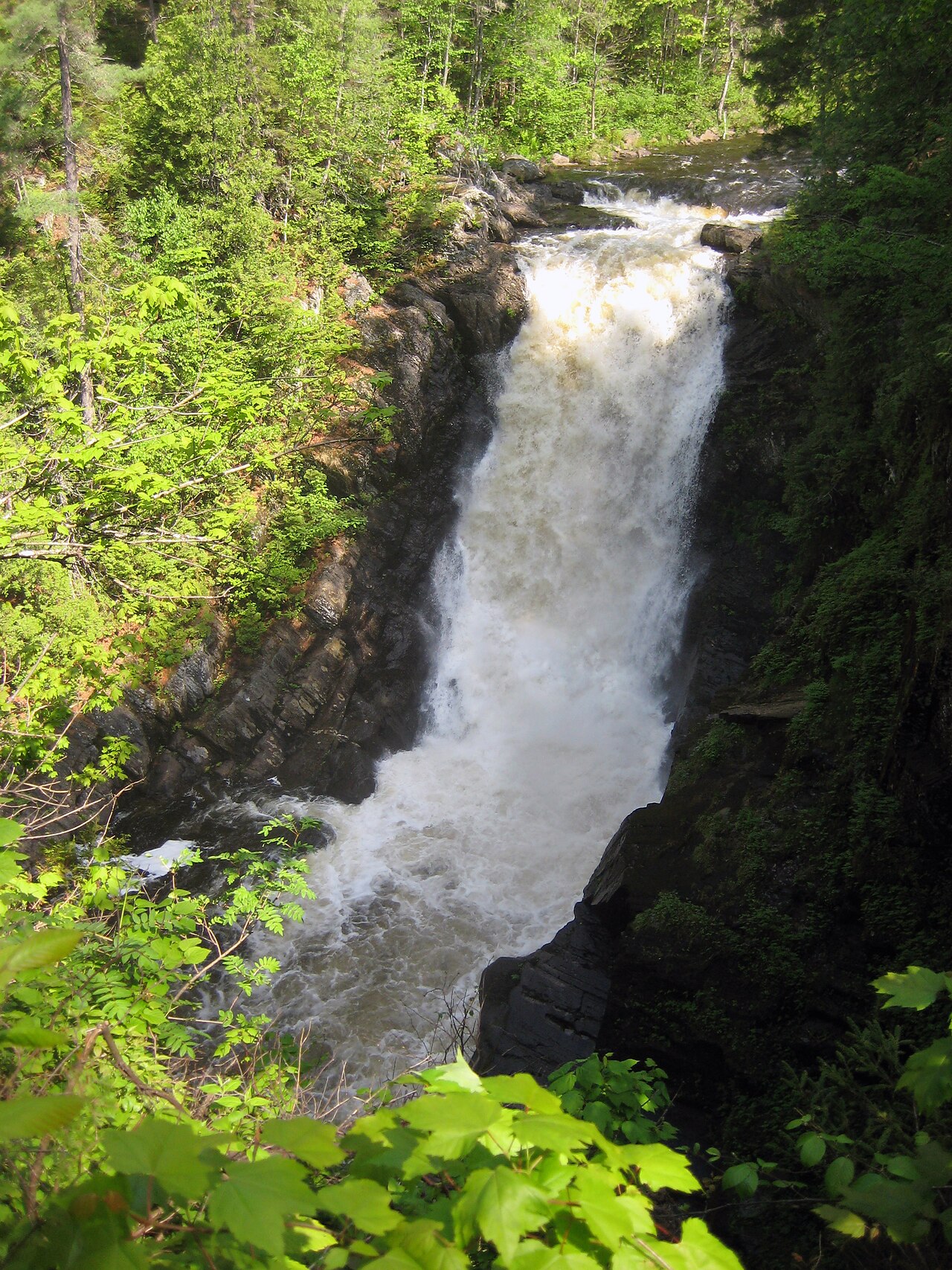
Sometimes, "easy" is kinda niiiice.... Enjoy your Sunday, People....!





Oxygen is created on Mars using MOXIE, paving the way for humans
MOXIE produced 12 grams of oxygen an hour, which is a full 100% more than what NASA had originally targeted.
And the local old timey drink (Elixir):

Possibly originally an Abanaki word, "Moxie" was otherwise "coined" right up the road from me rn... and I've camped/fished/vaped etc all around here many times:
Moxie Falls, Somerset County, ME

Sometimes, "easy" is kinda niiiice.... Enjoy your Sunday, People....!



Last edited:
We're gettin "there" little by little...!:


Oxygen is created on Mars using MOXIE, paving the way for humans
MOXIE produced 12 grams of oxygen an hour, which is a full 100% more than what NASA had originally targeted.www.earth.com
At one point we will probably need those on earth too...
CrazyDiamond
HAL is a StarChild
Top one I posted in the pic thread...thanks for the back up...I spaced that one!
CrazyDiamond
HAL is a StarChild
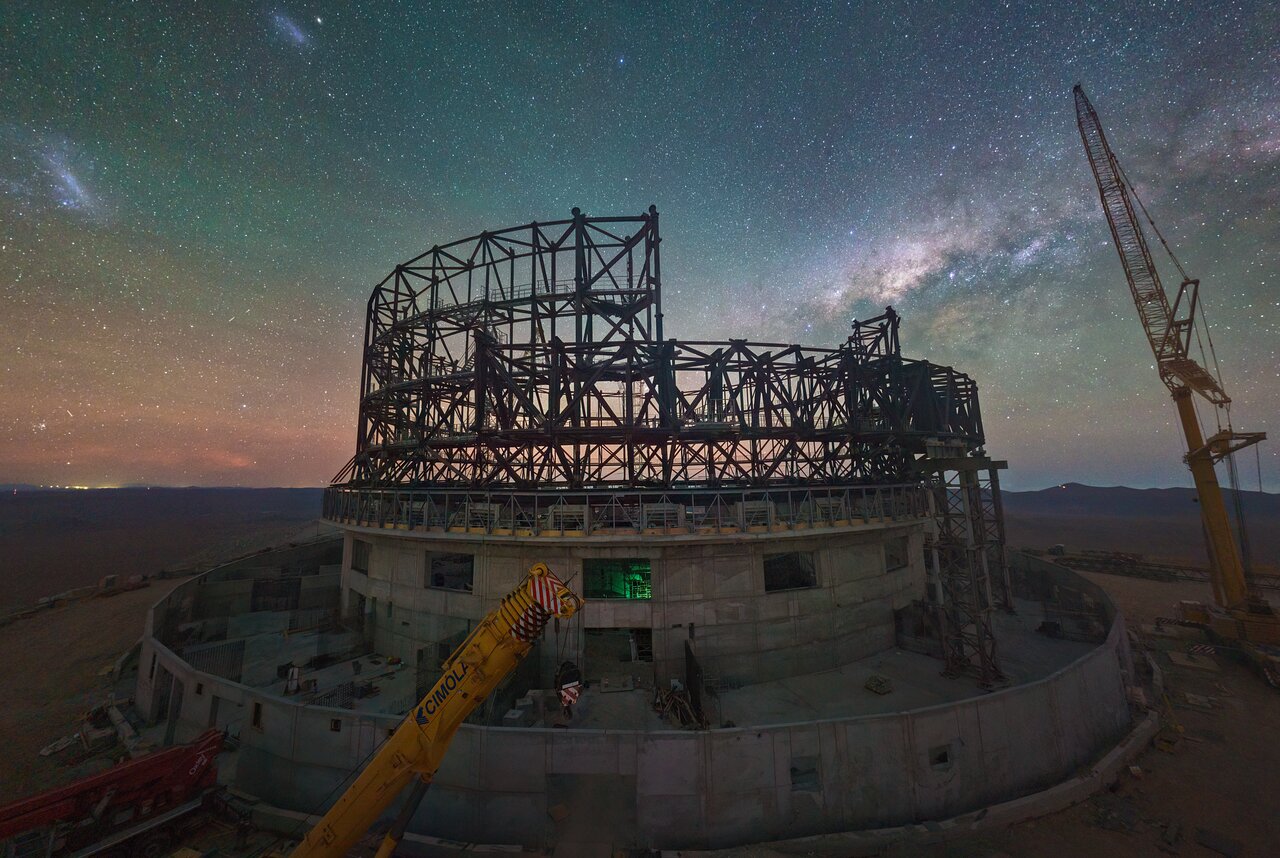
ESO’s Extremely Large Telescope is now half completed
The European Southern Observatory’s Extremely Large Telescope (ESO’s ELT) is a revolutionary ground-based telescope that will have a 39-metre main mirror and will be the largest telescope in the world for visible and infrared light: the world’s biggest eye on the sky. Construction of this...
Name: Extremely Large Telescope (ELT)
Main mirror diameter: 39 meters
Light collecting area: 978 square meters
Number of main mirror segments: 798
Alignment precision of the different segments that make up the main mirror: Tens of nanometers (10000x thinner than a human hair) across its entire 39-meter diameter.
Number of edge sensors that will measure the relative positions of the segments: 4,608
Amount of glass-ceramic Zerodur(c) in the telescope mirrors: 140 tonnes, of which 132 tonnes in the primary mirror alone.
Type: Optical/near-infrared extremely large telescope
Optical Design: Five-mirror design
Telescope field of view: 10 arcminutes
Site: Cerro Armazones, Atacama Desert, Chile
Altitude: 3,046m
Height of rock removed from the top of Armazones to create the platform for the ELT: 18 meters
Amount of rock removed to make room for the 150 meter by 300 meter ELT platform: 220,000 metric tons
Planned duration of the telescope construction: About 12 years
Planned year of technical first light: 2027
Estimated lifespan: 30+ years
Budget: €1.3 billion
Number of industrial contracts above €500 000 made to date: 43
Number of ESO staff (Full-Time Equivalent) the ELT uses on average during 2018–2022: About 100 each year
Time needed to walk from the entrance of the dome to the top via the set of stairs and walkways fixed to the inner side of the dome: About 30 minutes
Jill NYC
Portable Hoarder
@CrazyDiamond How does the ELT compare to the Webb telescope? Bigger?
CrazyDiamond
HAL is a StarChild
WAY bigger since it is land based.
JWST has a 6.8 meter mirror, ELT will be a 39 meter mirror.
JWST does not have to deal with atmospheric distortions, however, ELT uses adaptive optics (those lasers that come out of it)...
Adaptive Optics In a Nutshell...link Adaptive Optics
Turbulence in the Earth’s atmosphere causes the stars to twinkle in a way that delights poets but frustrates astronomers since it blurs the finest details of the cosmos. Observing directly from space can avoid this atmospheric blurring effect, but the high cost of operating space telescopes compared to using ground-based facilities limits the size and scope of the telescopes we can place off-Earth.
Astronomers have turned to a method called adaptive optics. Sophisticated, deformable mirrors controlled by computers can correct in real-time for the distortion caused by the turbulence of the Earth's atmosphere, making the images obtained almost as sharp as (or, in the case of the ELT, sharper than) those taken in space. Adaptive optics allows the corrected optical system to observe finer details of much fainter astronomical objects than is otherwise possible from the ground.
Adaptive optics requires a fairly bright reference star that is very close to the object under study. This reference star is used to measure the blurring caused by the local atmosphere so that the deformable mirror can correct for it. Since suitable stars are not available everywhere in the night sky, astronomers can create artificial stars instead by shining a powerful laser beam into the Earth's upper atmosphere. Thanks to these laser guide stars, almost the entire sky can now be observed with adaptive optics. The ELT will have up to eight of these lasers.
From the largest adaptive mirror ever built to advanced control systems, the ELT will have some of the most sophisticated technologies ever employed on a telescope to correct for the blurring effects of the Earth’s atmosphere.
What it will look like

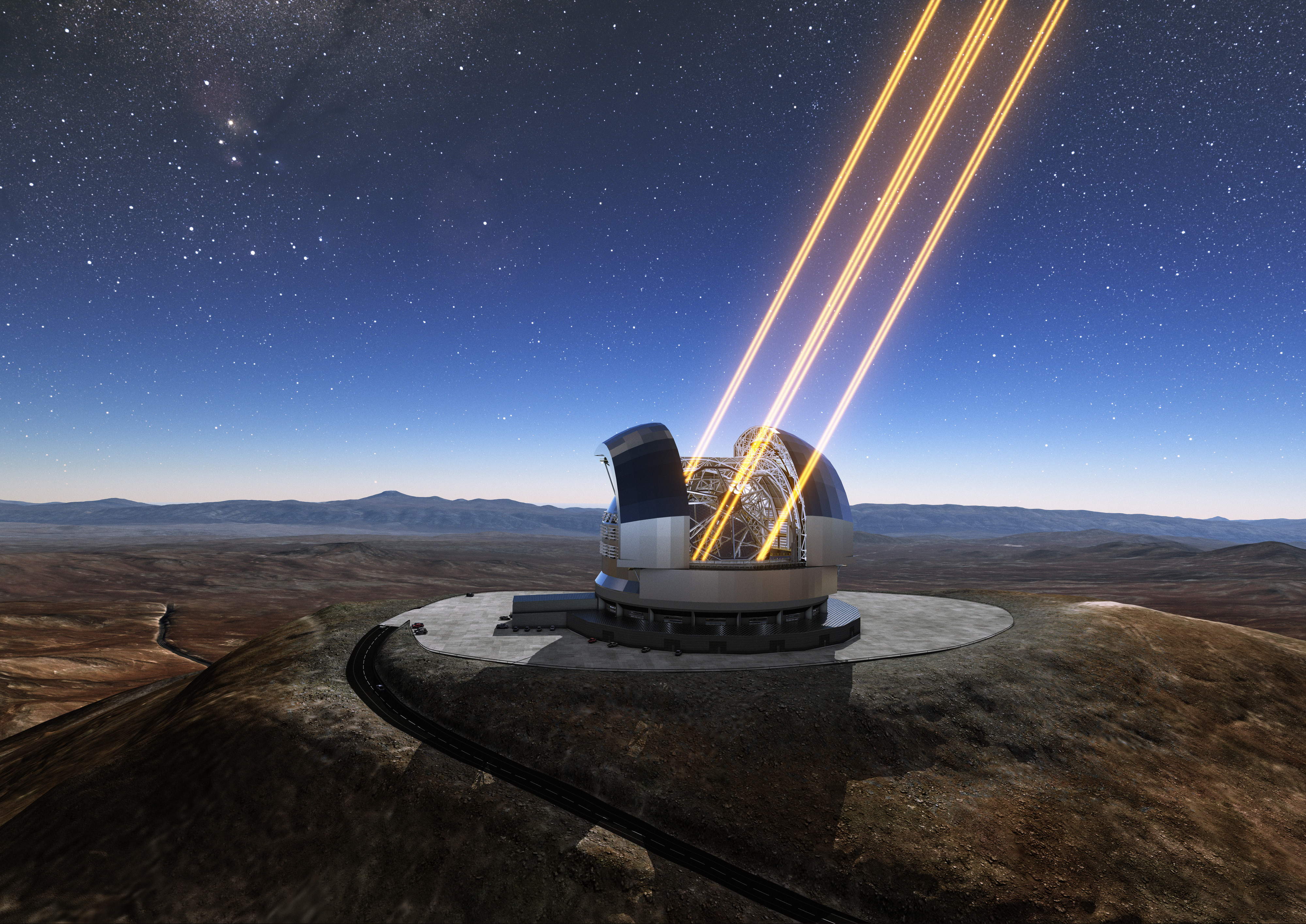
JWST has a 6.8 meter mirror, ELT will be a 39 meter mirror.
JWST does not have to deal with atmospheric distortions, however, ELT uses adaptive optics (those lasers that come out of it)...
Adaptive Optics In a Nutshell...link Adaptive Optics
Turbulence in the Earth’s atmosphere causes the stars to twinkle in a way that delights poets but frustrates astronomers since it blurs the finest details of the cosmos. Observing directly from space can avoid this atmospheric blurring effect, but the high cost of operating space telescopes compared to using ground-based facilities limits the size and scope of the telescopes we can place off-Earth.
Astronomers have turned to a method called adaptive optics. Sophisticated, deformable mirrors controlled by computers can correct in real-time for the distortion caused by the turbulence of the Earth's atmosphere, making the images obtained almost as sharp as (or, in the case of the ELT, sharper than) those taken in space. Adaptive optics allows the corrected optical system to observe finer details of much fainter astronomical objects than is otherwise possible from the ground.
Adaptive optics requires a fairly bright reference star that is very close to the object under study. This reference star is used to measure the blurring caused by the local atmosphere so that the deformable mirror can correct for it. Since suitable stars are not available everywhere in the night sky, astronomers can create artificial stars instead by shining a powerful laser beam into the Earth's upper atmosphere. Thanks to these laser guide stars, almost the entire sky can now be observed with adaptive optics. The ELT will have up to eight of these lasers.
From the largest adaptive mirror ever built to advanced control systems, the ELT will have some of the most sophisticated technologies ever employed on a telescope to correct for the blurring effects of the Earth’s atmosphere.
What it will look like


vapviking
Old & In the Way
I check in with is this site sometimes to get the ISS flyover schedule.

 spotthestation.nasa.gov
Nice clear night in NY tonight and it'll be arcing completely across the sky, SW to NNE. starting at 8:05, ideal time to get the grand kids out and get them to look up!
spotthestation.nasa.gov
Nice clear night in NY tonight and it'll be arcing completely across the sky, SW to NNE. starting at 8:05, ideal time to get the grand kids out and get them to look up!

International Space Station
See the International Space Station! As the third brightest object in the sky the space station is easy to see if you know when to look up.


